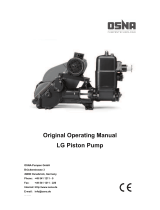Kärcher SHD-R 3000
The Kärcher SHD-R 3000 is a high-pressure cleaning system designed for cleaning enclosed containers, drums, barrels, and other similar equipment. It can be used with either water or cleaning agents, and features a variety of safety features to protect the operator.
The SHD-R 3000 is a powerful machine, with a flow rate of up to 50 l/min and a pressure of up to 200 bar. It is also very efficient, with a power consumption of just 2.2 kW.
The SHD-R 3000 is easy to use, with a simple control panel and a variety of nozzles to choose from. It is also very portable, weighing just 25 kg.
Kärcher SHD-R 3000
The Kärcher SHD-R 3000 is a high-pressure cleaning system designed for cleaning enclosed containers, drums, barrels, and other similar equipment. It can be used with either water or cleaning agents, and features a variety of safety features to protect the operator.
The SHD-R 3000 is a powerful machine, with a flow rate of up to 50 l/min and a pressure of up to 200 bar. It is also very efficient, with a power consumption of just 2.2 kW.
The SHD-R 3000 is easy to use, with a simple control panel and a variety of nozzles to choose from. It is also very portable, weighing just 25 kg.




















-
 1
1
-
 2
2
-
 3
3
-
 4
4
-
 5
5
-
 6
6
-
 7
7
-
 8
8
-
 9
9
-
 10
10
-
 11
11
-
 12
12
-
 13
13
-
 14
14
-
 15
15
-
 16
16
-
 17
17
-
 18
18
-
 19
19
-
 20
20
-
 21
21
-
 22
22
-
 23
23
-
 24
24
-
 25
25
-
 26
26
-
 27
27
-
 28
28
-
 29
29
-
 30
30
-
 31
31
-
 32
32
-
 33
33
-
 34
34
-
 35
35
-
 36
36
-
 37
37
Kärcher SHD-R 3000
The Kärcher SHD-R 3000 is a high-pressure cleaning system designed for cleaning enclosed containers, drums, barrels, and other similar equipment. It can be used with either water or cleaning agents, and features a variety of safety features to protect the operator.
The SHD-R 3000 is a powerful machine, with a flow rate of up to 50 l/min and a pressure of up to 200 bar. It is also very efficient, with a power consumption of just 2.2 kW.
The SHD-R 3000 is easy to use, with a simple control panel and a variety of nozzles to choose from. It is also very portable, weighing just 25 kg.
Ask a question and I''ll find the answer in the document
Finding information in a document is now easier with AI
Related papers
-
Kärcher K 5.91 MD Operating Instructions Manual
-
Kärcher HD 10/25 S USA User manual
-
Kärcher HD 6/13-4 M User manual
-
Kärcher HDS 698 C ECO User manual
-
Kärcher NT 65/2 ECO User manual
-
Kärcher HD 4000 C User manual
-
Kärcher NT 773 I User manual
-
Kärcher 6.295-359.0 User manual
-
Kärcher 6.295-360.0 User manual
-
Kärcher NT 611 User manual
Other documents
-
 Power Craft High-pressure cleaner Operating Instructions Manual
Power Craft High-pressure cleaner Operating Instructions Manual
-
 Power Craft High-pressure cleaner Operating instructions
Power Craft High-pressure cleaner Operating instructions
-
 OSNA LG 400 Original Operating Manual
OSNA LG 400 Original Operating Manual
-
Alfred DB2-BL Quick start guide
-
Ops-Core Multi-Hit Handgun Face Shield Operating instructions
-
Alfred DB2 Series User guide
-
Alfred DB1 Series User guide
-
Alfred DB1 Series Quick start guide
-
 Grace Digital SHD-ITR2BT Owner's manual
Grace Digital SHD-ITR2BT Owner's manual
-
Grundfos CSD Installation And Operating Instructions Manual








































